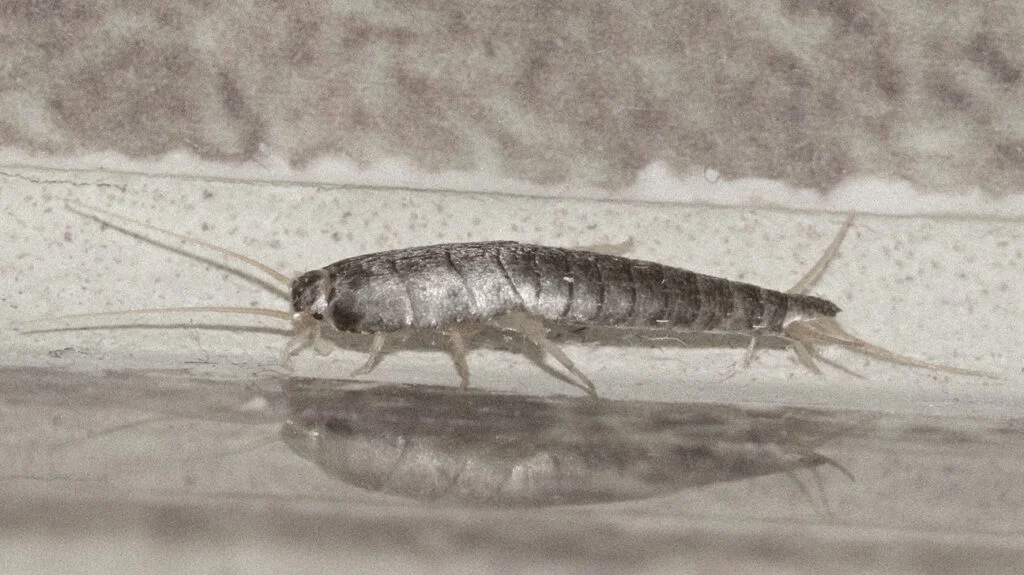Silverfish, also called “Silverfish Hive,” are small, wingless insects that are members of the Zygentoma order. Their bodies are formed like teardrops and can be anywhere in length from half an inch to an inch. They are distinguished by their silvery-blue color. These pests are frequently discovered crawling around in damp, shadowy parts of houses, where they feed on a variety of items including clothes, paper, glue, and even dried food.
Silverfish Hive: Habits and Characteristics
Dealing with an infestation of silverfish successfully requires an understanding of their habits and traits.
Dietary Preferences: Starchy materials such as paper, wallpaper, book bindings, and textiles are the main sources of food for silverfish. They have also been observed to eat dried foods like spaghetti and cereal. Their dietary choices may cause harm to property.
Nocturnal Nature: The majority of these pests are nocturnal, which means that they are most active at night. They may be difficult to identify because of this behavior.
Thermophilic Tendencies: Because they thrive best in warm, humid conditions, silverfish are frequently found in basements, kitchens, and bathrooms. The temperature range in which they grow is 70-85°F (21-29°C).
Quick Reproduction: Silverfish have a high rate of reproduction. A single female can lay up to 20 eggs in a single day, and depending on the surroundings, the eggs will hatch in 19–32 days.
Long Lifespan: Silverfish can live up to eight years in ideal circumstances. If left unchecked, this with their rapid pace of reproduction can result in significant infestations.
Spotting the Silverfish Hive: Signs of Infestation
Effective management of a silverfish infestation begins with identifying its symptoms. Keep an eye out for these signs:
Observations: Due to their nocturnal lifestyle, silverfish may be seen scampering around at night. They move quickly and will often hide if they feel threatened.
Paper and Clothes Damage: Examine books, papers, and clothes for any holes or strange markings. These materials are the food source for silverfish, which in turn cause distinctive damage.
Shed Skins: Throughout their lifetimes, silverfish molt, leaving behind small, translucent skins that are typically found in close proximity to their hiding places.
Yellow Stains: The excrement of silverfish has the appearance of tiny yellow stains. These might be seen on materials that have been infected or in places where silverfish are active.
Droppings: Silvery, pepper-like excrement can often be seen near their hiding locations.
How to Evict the Silverfish Hive: Getting Rid of Silverfish
Managing an infestation of silverfish necessitates a methodical strategy. The following actions can be taken to drive these undesirable visitors out of your house:
1. Reduce Humidity and Moisture
Wet conditions are ideal for silverfish growth. Take into account the following to make your house seem less welcoming to them:
Dehumidify: Lower humidity levels in damp spaces like bathrooms and basements by using a dehumidifier.
Fix Leaks: To avoid an excessive accumulation of moisture, rapidly fix any roof or plumbing leaks.
Ventilation: Make sure your house has enough ventilation in every room, particularly in the attic and basement.
2. Remove Food Sources
Because silverfish eat starchy materials, it’s critical to restrict their access to food:
How to Properly Store Food: To keep silverfish out of your pantry, keep food sealed in airtight containers.
Frequent Cleaning: Keep your house tidy, especially by vacuuming frequently to get rid of crumbs and other possible food sources.
Declutter: Get rid of paper clutter from old periodicals, newspapers, and cardboard boxes in your house.
3. Seal Entry Points
Avoid letting silverfish inside your house in the first place:
Fill in Gaps and Cracks: Caulk can be used to fill in gaps and cracks in baseboards, walls, and other possible access locations.
Weather Stripping: Make sure windows and doors have the appropriate weather stripping installed to keep silverfish out.
4. Use Natural Repellents
Think about employing home cures to ward off silverfish:
Diatomaceous Earth: This powder can help stop silverfish infestations because it is abrasive to them. Use caution because it can be dangerous if breathed.
Cedar shavings: Since silverfish don’t like the scent of cedar, you can keep them away by stashing cedar shavings in closets and other storage spaces.
5. Chemical Solutions
In the event that your infestation is serious, chemical remedies can be required. For a safe and efficient treatment, always adhere to the manufacturer’s instructions and think about hiring a professional pest control service.
Conclusion
Combating this domestic pest requires an awareness of the silverfish hive, their habits, and the warning indications of an infestation. You can rid your house of a silverfish infestation and make sure it doesn’t get any more by following the instructions on how to get rid of these unwelcome visitors and using chemical or natural remedies as needed. Recall that prevention is frequently the best course of action, so keeping your living area dry and clean is crucial to warding off silverfish.
Frequently Asked Questions (FAQs)
1. Are silverfish harmful to humans?
There is no evidence that silverfish cause sickness or injury to people directly. Nevertheless, if they eat clothes, books, and other starchy materials, they can cause harm to property.
2. Can silverfish infestations be prevented?
Yes, you can avoid silverfish infestations by keeping your home dry, caulking gaps around openings, and storing food correctly. Regular decluttering and cleaning can also be beneficial.
3. How do I get rid of silverfish without using chemicals?
Natural solutions that can ward off silverfish include cedar shavings and diatomaceous earth. Another important part of preventing infestations is keeping the surroundings dry and clean.
4. When should I consider professional pest control services?
It’s best to hire a pest control company if your severe or ongoing silverfish infestation hasn’t been controlled by home methods. With their knowledge and equipment, they can handle the problem in a safe and efficient manner.
